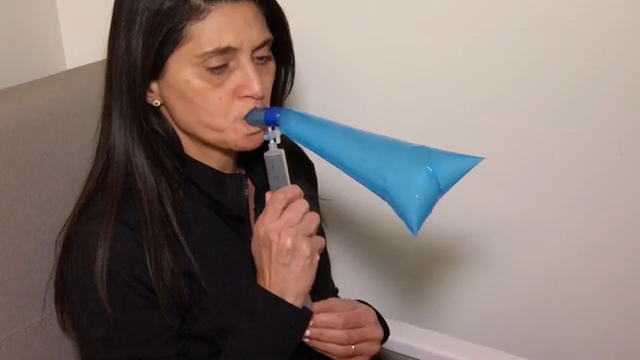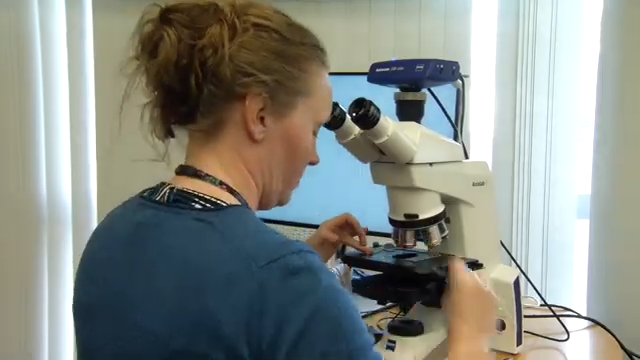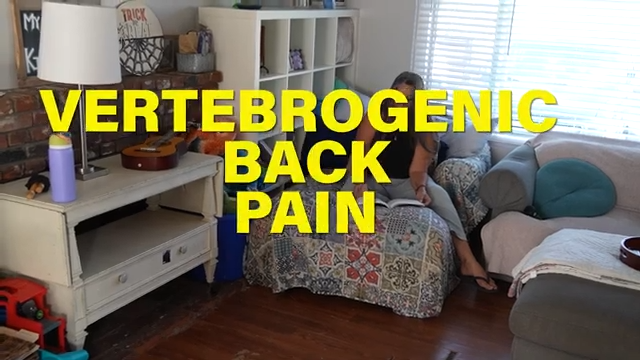NEW HAVEN, Conn. (Ivanhoe Newswire)— When a loved one is having a stroke, time is everything. Drugs to break up the clot that is stopping blood flow must be administered within four and a half hours to work. Clot removal, or thrombectomy, has a 24-hour window. Now, neurosurgeons are studying an old approach to clot removal in stroke patients who would otherwise be out of options.
Joan Guardiano plays a mean hand of gin rummy, even as she recovers from a massive stroke. Last summer, Joan’s family stopped by to visit and found her … unresponsive.
“She was on the ground and she couldn’t talk, she was slurring her words,” recalled Joan’s son, Vince Guardiano.
“I was in the ambulance and that was it. I don’t remember one thing after that,” Joan shared.
“I understand there’s some kind of medication that they can give before, within a certain timeframe. I think she missed that timeframe,” Vince explained.
Yale neurovascular surgeon Charles Matouk moved to the next option—removing a clot by passing a catheter through the groin into the larger arteries. But surgeons were having trouble.
“The problem is, is that as we get older, our blood vessels become more twisted and they become more difficult to navigate,” described Dr. Matouk, chief of neurovascular surgery at Yale School of Medicine.
Instead, surgeons used a different approach with Joan. It’s called direct carotid puncture—accessing the clot through the neck, near the collarbone.
“And that creates a very convenient space where you are going to miss all the nerves and veins that coarse through the neck and gives us easy access to the carotid artery,” elaborated Dr. Matouk.
Doctors used direct carotid puncture in the sixties but abandoned the procedure when new medical tools made entry through the leg a safe option. Dr. Matouk says the direct carotid puncture could save about ten percent of stroke patients who had no other options.
Patients, like Joan Guardiano, who survived her stroke, and feels good about the hand she’s been dealt.
After studying the direct carotid procedure, Dr. Matouk says Yale neurosurgeons have incorporated the procedure back into their operating room. He says surgeons try traditional clot removal for about 15 minutes, and if a patient’s anatomy makes access too difficult, they switch to the direct carotid punch. He says other hospitals with large neurosurgery departments are also incorporating the technique.
Contributors to this news report include: Cyndy McGrath, Executive Producer & Field Producer; Kirk Manson, Videographer; Roque Correa, Editor.
To receive a free weekly e-mail on Medical Breakthroughs from Ivanhoe, sign up at: http://www.ivanhoe.com/ftk
Sources:
https://www.ncbi.nlm.nih.gov/pmc/articles/PMC7213516/
MEDICAL BREAKTHROUGHS
RESEARCH SUMMARY
TOPIC: DIRECT CAROTID PUNCTURE SAVES STROKE PATIENTS
REPORT: MB #4860
STROKE: A stroke occurs when the blood supply to part of the brain is interrupted or reduced, preventing brain tissue from getting oxygen and nutrients. Brain cells begin to die in minutes. It is a medical emergency, and prompt treatment is crucial. The two main causes of stroke are a blocked artery (ischemic stroke) or leaking or bursting of a blood vessel (hemorrhagic stroke). Signs and symptoms of stroke include trouble speaking and understanding what others are saying, paralysis or numbness of the face, arm or leg, problems seeing in one or both eyes, headache, trouble walking and sudden dizziness or loss of coordination. Stroke is the most common cause of death and the leading cause of permanent disability in the U.S.
(Source: https://www.mayoclinic.org/diseases-conditions/stroke/symptoms-causes/syc-20350113, https://www.mayoclinic.org/diseases-conditions/carotid-artery-disease/symptoms-causes/syc-20360519)
TRADITIONAL TREATMENT OF STROKES: According to the American Stroke Association, there are two different types of stroke: ischemic and hemorrhagic. With an ischemic stroke a tissue plasminogen activator treatment (TPA) is utilized, which is delivered through an IV in the arm. The TPA treatment dissolves the clot to improve blood flow to the affected part of the brain. An intravenous injection of TPA is highly effective for smaller blood clots but it often fails to break up larger clots. A TPA treatment should happen within the first 3 hours after detecting symptoms, though it is effective for some patients within 4.5 hours. Another treatment option is a mechanical thrombectomy and stent retriever therapy. The stent is a tiny wire-mesh tube that props open an artery. The stent is inserted into the body and opens and captures the clot so doctors can remove the stent along with the trapped clot. A mechanical thrombectomy procedure should be done within six hours of acute stroke symptoms and only after a patient receives TPA. Time is of the essence as 91% of patients who receive the treatment within 2.5 hours avoid permanent disability.
(Source: https://www.saebo.com/blog/traditional-innovative-treatments-strokes/)
DIRECT CAROTID PUNCTURE FOR TREATMENT OF STROKES: Carotid arteries are vessels that deliver blood to your brain. Carotid artery disease is when fatty deposits clog those vessels. The blockage increases your risk of having a stroke. A method called direct carotid puncture (DCT) offers a lifesaving and surprisingly safe alternative to the standard thrombectomy for patients with difficult-to-access arteries. This procedure involves inserting a catheter through a patient’s neck, right into the carotid artery, and then doing a thrombectomy, where a stent is used to remove the clot causing the stroke. DCT allows doctors to access the clot much more quickly and bypass an abnormal vascular system. The approach includes choosing a puncture site low on the neck, using ultrasound as a guide, and stopping bleeding by applying pressure. Charles Matouk, MD., Vice Chairman of Neurosurgery and Chief of Neurovascular surgery at Yale School of Medicine stated, “From puncturing to accessing the clot, it can be anywhere from five to 15 minutes in a procedure that would have taken more than an hour or two. The big thing is we have a procedure that can remove clots from the brain very efficiently. So, the technology is advanced to a point now where 80% to 90% of the time we are going to be able to remove the blood clot from your brain and potentially make a big stroke into a little stroke.”
(Sources: https://www.mayoclinic.org/diseases-conditions/carotid-artery-disease/symptoms-causes/syc-20360519, https://medicine.yale.edu/news-article/27860/, Interview with Charles Matouk, MD.)
FOR MORE INFORMATION ON THIS REPORT, PLEASE CONTACT:
JENNY CHEN
If this story or any other Ivanhoe story has impacted your life or prompted you or someone you know to seek or change treatments, please let us know by contacting Marjorie Bekaert Thomas at mthomas@ivanhoe.com




